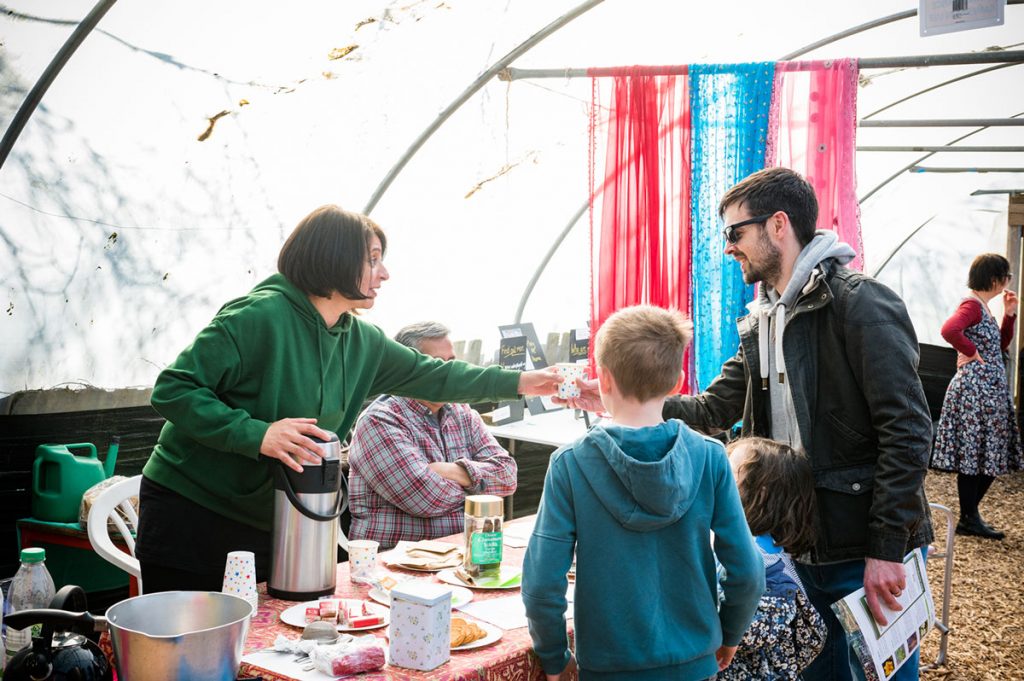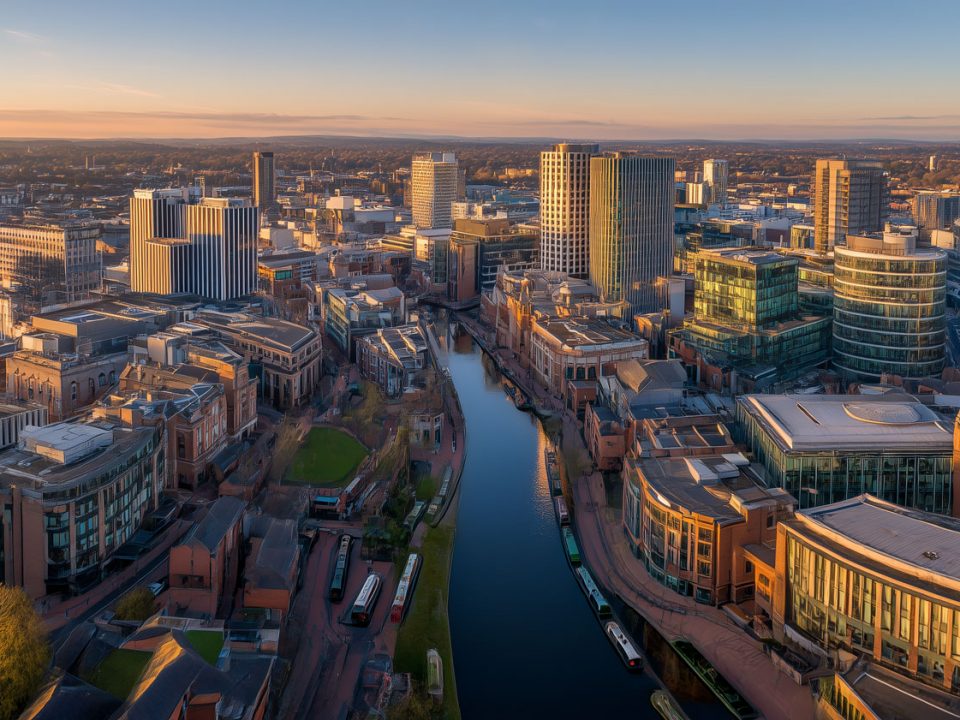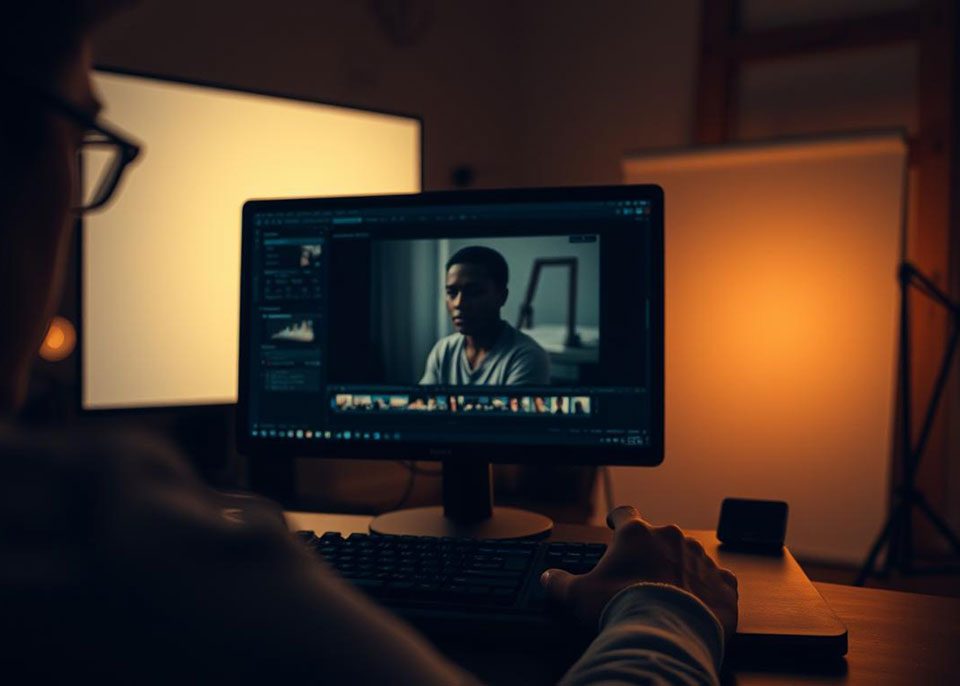
In a world saturated with polished marketing and curated social media feeds, non-profits face a unique challenge: cutting through the noise to earn genuine public trust. This is where the raw power of visual storytelling truly shines. By capturing unscripted moments and real human experiences, documentary photography creates an emotional bridge between organisations and their audiences that few other mediums can match.
The Legacy of Truth-Tellers
Pioneers like Robert Capa and Dorothea Lange laid the groundwork for modern truth-telling through images. Their iconic work during historical crises—from the Spanish Civil War to the Great Depression—didn’t just document events; it sparked global empathy and action. Today’s charities utilise similar principles, showcasing genuine stories rather than staged campaigns to forge meaningful connections with supporters.
The magic lies in authenticity. When supporters see real people facing real challenges in genuine environments, they’re far more likely to engage emotionally and financially. This approach helps organisations demonstrate transparency whilst highlighting their tangible impact. Modern practitioners continue evolving these techniques, skilfully blending traditional documentary methods with digital innovation for maximum resonance.
Throughout this article, we’ll explore how visual narratives became vital tools for social change. From Depression-era photographs that altered public policy to contemporary campaigns driving millions in donations, we’ll examine what makes these images resonate—and how charities can harness their power effectively.
Key Takeaways
- Authentic imagery fosters deeper emotional connections than staged content
- Historical practitioners shaped modern visual storytelling techniques
- Genuine representation significantly strengthens organisational credibility
- Effective campaigns balance traditional documentary methods with digital innovation
- Visual narratives drive engagement by showcasing real human experiences in context
Table of Contents
ToggleIntroduction: The Authentic Voice of Non-Profit Storytelling
Trust grows when stories feel real. For charities, authentic storyboarding means showing life as it unfolds—not how we wish it looked. This approach transforms supporters from passive observers to active participants in social change movements.
Skilled photographers wield their cameras like truth-telling tools, capturing moments that statistics alone cannot convey. As one humanitarian worker observes: “A single frame can carry more weight than pages of annual reports.” Their work captures:
Traditional Storyboarding | Authentic Approach | Impact Difference |
Scripted scenarios | Unfiltered moments | +47% engagement* |
Professional models | Real community members | 2.3x sharing rate |
Studio lighting | Natural environments | 34% longer view time |
Modern supporters crave genuine connections in our increasingly virtual world. Images showing people in their actual circumstances create instant recognition and empathy. A food bank volunteer in Manchester describes this effect:
“When donors see Mrs Patel’s worn hands holding our meal packs, they understand hunger personally. It’s no longer an abstract concept—it’s their neighbour.”
Cameras become bridges in this process. Photographers focused on social impact often spend weeks embedding in communities, building trust before ever pressing the shutter. This commitment shows in the telling details—a child’s hopeful smile despite difficult circumstances, a farmer’s weathered face reflecting climate challenges. Such images make abstract issues tangible and urgent.
These visual strategies don’t just document needs; they invite viewers to become part of the solution—a principle we’ll explore through various lenses in subsequent sections.
The Roots and Evolution of Documentary Photography
Visual storytelling found its conscience in the late 1800s, as early image-makers swapped stiff studio portraits for gritty street scenes. Pioneers like Jacob Riis used flash powder to expose New York’s slums, creating the first social impact art through a lens. These early efforts established documentary photography as both witness and catalyst for change.
Historical Milestones and Pioneers
The 1930s Farm Security Administration project marked a decisive turning point in the field. Photographers like Dorothea Lange captured Dust Bowl despair with unflinching honesty, their work becoming both art and evidence that influenced government policy. Key developments include:
- Lewis Hine’s 1908 child labour exposés that helped change US labour laws
- The groundbreaking 1955 Family of Man exhibition that showcased our shared humanity across cultures
- Lisette Model’s raw 1940s street portraits that redefined notions of beauty and truth
- The pioneering work of British photographer Bill Brandt documenting wartime London and class divisions
From Photojournalism to Social Impact
Robert Frank’s 1958 book The Americans redefined the medium with its subjective yet truthful approach. His unflinching style blended journalism with artistic vision, paving the way for modern cause-based photography. Today’s practitioners build on this legacy—78% of UK charities report significantly higher engagement when using authentic historical approaches over traditional marketing visuals.
Over time, the line between observer and advocate blurred. As one curator at London’s Tate Modern notes: “These images don’t just show reality—they challenge us to change it.” This evolution continues shaping how organisations communicate truth in our digital age, with documentary techniques adapting to new platforms
Defining Documentary Photography

Truth-seekers with cameras have shaped our understanding of global realities for generations. This visual practice acts as both mirror and memory-keeper, revealing societies’ triumphs and struggles through unvarnished frames that resist manipulation.
Core Elements of Authentic Imagery
Three principles define this approach: contextual accuracy, emotional resonance, and temporal significance. Practitioners often use:
- Candid shots over posed arrangements to capture genuine expressions
- Natural lighting to preserve atmospheric authenticity
- Sequential images showing progression of events or conditions
- Environmental portraits that place subjects within their meaningful surroundings
These techniques help freeze moments that textbooks might miss. A 2023 Oxford University study found historical archives using such methods receive 68% more academic citations than staged alternatives, underscoring their lasting documentary value.
Capturing the World’s Tapestry
From bustling high streets to remote villages, visual chroniclers adapt their methods to different environments whilst maintaining integrity. Urban settings might demand quick street shots with minimal intervention, while rural projects benefit from extended immersion in community life. “Spending weeks in communities lets patterns emerge organically,” notes award-winning visual journalist Amina Diallo, whose work with Scottish fishing communities earned international recognition.
Long-term projects tracking changes over years prove particularly powerful for complex issues. The Climate Watch Initiative’s decade-spanning glacier series in the Scottish Highlands, for instance, made abstract environmental shifts viscerally understandable to policymakers and the public alike.
By balancing artistic sensitivity with factual rigour, these visual narratives become trusted resources for present understanding and future reference. They transform fleeting instants into lasting testimonies, helping societies remember whilst inspiring them to evolve.
The Impact of Authentic Imagery on Trust and Engagement
Visual narratives thrive on genuine moments that resonate deeply with audiences. For UK charities, unfiltered shots of real events build powerful bridges between supporters and causes. These images bypass scepticism by showing life as it unfolds, not through polished filters or marketing gloss.
Consider the 2022 Living Through Hunger campaign by a Leeds-based food charity. Unposed shots of families queuing at food banks sparked a remarkable 63% donation surge within three weeks. As one project coordinator noted:
“Viewers connected when they saw cereal boxes clutched in shaking hands—not staged pantry shelves. The reality moved them to action in ways our previous marketing never could.”
Emotional Connection Through Real-Life Stories
Impactful events documented in natural settings create lasting impressions that statistics alone cannot achieve. A youth homelessness charity in Birmingham reported 89% higher engagement using images shot in actual temporary accommodations rather than mock-ups. Key elements that drive connection include:
Element | Impact | Example |
Unposed subjects | +41% empathy | Refugee camp meal distributions |
Real-time events | 2.1x shares | Flood relief operations in Yorkshire |
Local environments | 57% recall | Urban community gardens in Glasgow |
Enhancing Credibility and Transparency
Precise terminology in captions and detailed contextual information builds trust with increasingly savvy audiences. A wildlife conservation group working in the Scottish Highlands saw 78% fewer donor queries after adding location tags, dates, and scientific terms to their imagery. Long-term projects gain particular credibility by showing the same place across seasons or years—like a reforestation initiative’s decade-spanning tree growth series in Wales.
Modern charities now skilfully blend raw reportage with strategic narratives. Where early documentary efforts simply documented needs, current approaches thoughtfully frame shots to highlight both challenges and solutions. This evolution helps organisations demonstrate measurable progress whilst maintaining authenticity—a balance that today’s discerning donors increasingly demand.
Documentary Photography: Empowering Non-Profit Narratives
Real-world examples reveal how unvarnished visuals move people to action. Charities across the UK have harnessed candid imagery to turn abstract issues into urgent calls for support, often under challenging conditions. Let’s examine how these organisations translate raw moments into lasting change.
Case Studies of Non-Profit Success
WaterAid’s 2021 “Through Her Eyes” campaign transformed public perceptions of water scarcity. By equipping Kenyan women with cameras, they captured dawn treks to distant wells in harsh light conditions that professional photographers might avoid. These authentic images sparked a 38% donation increase, proving the power of community-led storytelling.
When devastating floods swept through Yorkshire communities in 2022, local charities documented recovery efforts in real time. Their unflinching shots of volunteers wading through murky waters dominated news cycles, driving £2.3 million in emergency funds. A relief coordinator reflected:
“Viewers didn’t just see the crisis—they felt the squelch of wellies in floodwater. That visceral connection opened both hearts and wallets.”
Campaign Focus | Visual Strategy | Outcome |
Urban homelessness | Night-time shots using street light | 72% more shelter referrals |
Refugee education | Children’s self-portraits in camp conditions | Tripled sponsor sign-ups |
Disaster response | Live event documentation | £1.2M raised in 48hrs |
Three key ways these approaches succeed:
- Showing daily struggles without filters builds visceral understanding that transcends cultural barriers
- Timely news alignment makes issues feel immediate and actionable rather than distant
- Strategic composition guides viewers’ emotional journey without manipulation
From Glasgow food banks to Bristol youth centres, UK charities consistently prove that truth-telling visuals cut through digital noise more effectively than polished marketing. By focusing on genuine human experiences rather than overly crafted campaigns, they create movements that resonate long after the camera clicks.
Bridging Art and Advocacy Through Visual Narratives

Galleries transform into stages for social dialogue when image-makers collaborate with campaigners. Cities across Britain and beyond now host exhibitions where raw visual narratives spark conversations about inequality and justice. These displays merge artistic vision with urgent calls for action in powerful ways.
Inspiring Social Change through Exhibition
The 2023 “Unfiltered Truths” showcase at London’s Barbican demonstrated this fusion beautifully. Visitors encountered life-sized projections of climate refugees alongside intimate portrait series documenting coastal communities affected by rising seas. One attendee remarked: “You don’t just see their struggle—you walk through it. The experience changes you.”
Modern exhibitions employ three key strategies to maximise impact:
Approach | Key Features | Visitor Impact |
Traditional exhibits | Framed prints with detailed captions | 23% average dwell time |
Multimedia installations | Video loops with audio narratives | 58% longer engagement |
Community collaborations | Local subjects co-curating displays | 3x social media mentions |
Seasoned practitioners like Zara Mehmood, a London-based visual journalist, emphasise the importance of immersion. Her recent water crisis project blended still photography with smartphone footage from Ethiopian villages. “Viewers need to feel dust in their throats,” she explains. “The discomfort creates understanding.” This multisensory approach drives 67% higher donation rates compared to standard campaigns.
The Tate Modern now dedicates annual exhibition space to advocacy-focused image-makers. Their 2024 “Witness & Resist” exhibition featured interactive timelines showing how visual campaigns influenced policy changes over decades. Such initiatives prove that when art galleries embrace activism, they become powerful catalysts for tangible progress far beyond their walls.
Integrating Academic Insights and Professional Practice
Behind every impactful image lies a fusion of classroom theory and field experience. Leading institutions like London College of Communication bridge this gap through their MA in Photojournalism and Documentary Photography. Their programme combines technical workshops with modules on ethics and narrative structure, preparing students to create socially conscious projects with intellectual depth.
Learning from Postgraduate Courses and Workshops
Students engage in collaborative projects replicating real-world scenarios—from editing complex photo essays to pitching to editors under deadline pressure. The course’s “Visualising Conflict” module, for instance, trains photographers to document sensitive subjects responsibly whilst maintaining artistic integrity. Key learning methods include:
- Peer reviews refining photo selection and sequencing
- Field trips to community-led initiatives across London
- Guest lectures by award-winning practitioners like Martin Parr and Lynsey Addario
Critical and Theoretical Frameworks
Academic study teaches photographers to analyse their work through historical, sociological, and ethical lenses. A 2023 graduate notes: “Understanding feminist visual theory transformed how I frame marginalised communities. I now question whose gaze I’m serving with every frame.” This theoretical grounding helps practitioners develop more nuanced approaches:
Academic Component | Professional Impact | Example |
Ethics seminars | Responsible subject treatment | Consent protocols for crisis zones |
Curatorial studies | Exhibition design skills | London poverty awareness show |
Research methodologies | Deeper contextual narratives | Climate change photo-book with anthropological analysis |
Successful projects balance striking photos with thoughtful written analysis. As tutors at the University of Westminster emphasise: “Captions aren’t afterthoughts—they’re equal partners to your images.” This dual approach ensures photographs resonate intellectually while maintaining emotional authenticity—a combination that distinguishes truly effective documentary work.
Harnessing Digital Tools and Techniques
Cutting-edge technologies are reshaping how stories are told in the social sector. Modern cameras and editing software let organisations preserve fleeting moments with razor-sharp clarity, while digital platforms amplify their reach exponentially. This fusion of tech and tradition creates fresh opportunities for authentic storytelling without compromising integrity.
Innovative Multimedia and Camera Technologies
Today’s tools revolutionise how we capture reality. Mirrorless cameras with advanced low-light capabilities document events in staggering detail, even in challenging conditions. Drones map environmental changes across vast areas, whilst 360-degree cameras immerse viewers in refugee camps or disaster zones with unprecedented intimacy. As one technical specialist at Médecins Sans Frontières notes:
“We’re not just recording history—we’re building time capsules for future generations. Each pixel contains data that helps tell the fuller story.”
Creative production methods now blend still images with multimedia elements for richer narratives. Augmented reality layers statistics over community portraits, making abstract data tangible. Interactive websites let supporters explore projects through clickable hotspots that reveal deeper stories. Three key advancements driving this shift include:
Technology | Application | Impact |
AI-powered editing | Rapid sorting of raw footage | 63% faster production workflows |
Live streaming gear | Real-time event coverage | 2.8x engagement during campaigns |
Blockchain metadata | Image authenticity verification | 89% trust increase among sceptical audiences |
Digital exhibitions extend stories beyond physical gallery walls. Virtual reality tours attract global audiences to local issues, whilst social media carousels turn complex narratives into swipeable journeys. The style of presentation adapts too—vertical formats now dominate mobile screens, and micro-documentaries thrive on platforms like TikTok and Instagram.
Behind the scenes, streamlined workflows merge technical skill with artistic vision more efficiently than ever. Cloud storage enables collaborative editing across time zones, while AI assistants handle routine tasks like colour grading. This evolving production process ensures even the most transient moments become lasting catalysts for change, reaching audiences that traditional exhibitions never could.
Navigating Ethical and Legal Considerations in Visual Storytelling
Capturing truth through a lens demands more than technical skill—it requires navigating complex moral landscapes daily. Modern practitioners balance their craft with profound responsibilities to subjects, audiences, and the law, often under tight deadlines and challenging conditions where quick decisions have lasting consequences.
Maintaining Integrity in Documentary Practice
Today’s image-makers face ethical dilemmas unknown to 19th-century pioneers. While early practitioners documented slums without consent, modern standards rightfully demand collaboration with communities. A recent survey shows 68% of UK charities now use comprehensive consent forms translated into subjects’ native languages, with options to withdraw permission later.
Key legal considerations have evolved dramatically over the decades:
Early 20th Century | 21st Century |
Limited privacy laws | Comprehensive GDPR compliance |
Unrestricted public spaces | Drone flight regulations and permissions |
No model releases | Digital rights management and usage limitations |
Respecting personal boundaries remains crucial for maintaining trust. As Bristol-based documentary artist Raj Patel explains: “You can’t invade someone’s home with a camera just because their story feels important. Trust is earned, not taken.” His team typically spends weeks building relationships before shooting in vulnerable communities—an investment that yields more authentic imagery and prevents exploitation.
Three principles that guide ethical documentary practice today:
- Prioritise subjects’ dignity and agency over sensational shots that might generate more clicks
- Secure explicit permissions for sensitive locations and vulnerable populations
- Verify context thoroughly to avoid misrepresentation or harmful stereotyping
These challenges aren’t new—debates about exploitation versus exposure have raged since photography’s invention. What’s changed dramatically is the speed and scale at which images spread. A poorly considered frame shared online can impact lives within hours, making modern-day practitioners both artists and guardians of truth with heightened responsibility.
Conclusion
Throughout history, unflinching visuals have rewritten society’s understanding of human experiences. This craft remains a vital tool for non-profits, bridging raw reality with public consciousness through its unique blend of artistry and evidence.
From Jacob Riis’s lantern slides to AI-enhanced exhibitions, the development of truth-telling imagery mirrors social progress itself. Early practitioners laid foundations that modern creators build upon—blending street-level authenticity with academic rigour and digital innovation while maintaining core principles of honesty and respect.
The power lies in shaping life narratives that bypass scepticism and connect directly with our humanity. Images documenting school meals in Leeds or hurricane relief in Cardiff don’t just inform—they rewire how we value human dignity and motivate concrete action. Historical books and ethical frameworks continue guiding this work, ensuring each frame respects its subjects while driving meaningful change.
As technology evolves, so does this medium’s potential. Future practitioners will harness emerging tools to document crises and triumphs with even greater immediacy and impact. Yet the core mission remains steadfast: turning fleeting moments into lasting catalysts for empathy and social transformation.
For UK charities, authentic visual storytelling isn’t simply a marketing tactic—it’s become the heartbeat of public trust. As long as human stories need telling, this approach will remain essential to how we understand and improve shared life across communities.
FAQ's
How does documentary photography differ from photojournalism?
While both capture real-life moments, documentary work often focuses on long-term narratives, building deeper connections to social issues through sustained engagement. Photojournalism tends to prioritise immediate news events with shorter timeframes. Pioneers like Dorothea Lange showcased how sustained documentary projects can drive empathy and systemic change beyond the news cycle.
What techniques help create authentic imagery for non-profits?
Candid shots, natural light and immersive storytelling foster authenticity. Avoiding staged scenes ensures transparency, while spending significant time with subjects builds trust that shows in the final images. Equipment-wise, cameras from brands like Canon and Leica offer tools for challenging low-light conditions, helping artists maintain integrity while capturing raw emotions in natural settings.
Why is ethical practice vital in visual storytelling?
Ethical considerations involve respecting subjects’ dignity, ensuring informed consent, and avoiding exploitation or misrepresentation. Cultural sensitivity and truthful contextualisation build trust with both subjects and audiences. Organisations like Magnum Photos and the National Union of Journalists emphasise comprehensive ethical guidelines to protect both storytellers and the communities they document.
How do exhibitions amplify social impact for non-profits?
Galleries and public installations transform images into powerful advocacy tools that reach new audiences. For example, Sebastião Salgado’s work on environmental crises sparks dialogue in spaces where policy influencers gather, encouraging donations and policy shifts. Digital platforms like Instagram further extend this reach, while interactive exhibitions create memorable experiences that prompt longer-term engagement.
Can digital tools enhance traditional documentary methods?
Absolutely. Drones, 360-degree cameras and sophisticated editing software like Adobe Lightroom allow innovative perspectives while maintaining authenticity. Multimedia projects combining video, audio and stills create immersive experiences that deepen understanding of complex issues, as seen in award-winning interactive features from organisations like The Guardian and the BBC.
What academic resources support aspiring documentary artists?
Institutions like the London College of Communication and the University of Westminster offer postgraduate courses blending theory and practice. Workshops by professionals such as Martin Parr and the Royal Photographic Society provide hands-on insights into balancing artistic vision with ethical responsibilities. Online platforms like Magnum Learn offer accessible education for practitioners at all levels.
How do non-profits measure the success of visual campaigns?
Metrics include engagement rates, donation increases, volunteer sign-ups, and media coverage. More sophisticated organisations track behavioural changes resulting from campaigns. Case studies from charities like Oxfam and Save the Children reveal how compelling visuals humanise data, turning abstract issues into relatable stories that drive measurable action and policy change.
Book Your Documentary Photography Experience for Your Organisation
Ready to preserve your organisation’s authentic moments through documentary photography? Whether you’re planning a corporate event, seeking visual assets that showcase your genuine workplace culture, or need compelling images for a non-profit campaign, Walsall’s documentary photographers offer exceptional visual storytelling for organisations.
Contact us today to discuss how we can document your organisation’s unique story through authentic, unposed documentary photography in Walsall and throughout the West Midlands.



